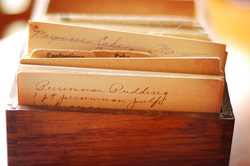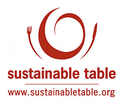Favorite Recipes of Ours and Our Friends

In our ongoing quest for freedom from MSG, HFCS, and way too much salt, and Maggie's quest for the best and nutritious recipes ever created, we'll be looking for and posting healthier recipes that focus on locally sourced ingredients.
If you have a favorite you'd like to share, pass it along and, as long as it fits, it'll be posted here. I'll try to add recipes under categories that seem to make sense. Hopefully you'll find it helpful. Happy cooking!
If you have a favorite you'd like to share, pass it along and, as long as it fits, it'll be posted here. I'll try to add recipes under categories that seem to make sense. Hopefully you'll find it helpful. Happy cooking!
Converting Recipes for Your Slow Cooker

I love my slow-cooker but I also love those old standard favorite recipes involving the oven. Then I discovered this secret from Taste of Home!
You can convert almost any stovetop or oven recipe to use in your slow cooker. Here's how:
1. Read the manufacturer's guide for your slow cooker (if you have one - I don't, so it's guesswork).
2. Find a slow-cooker recipe that's similar to the one you want to convert and use it as a guide. Note the amount and size of meat and vegetables, heat setting, cooking time, and the amount of liquid.
3. Slow cookers don't allow for evaporation, so you may need to adjust the amount of liquid. If the guide recipe calls for 6-8 cups of water, start with 5 cups. If a recipe doesn't include liquid, add 1/2 cup of water or broth.
4. One hour of simmering or baking at 350F equals 8-10 hours on low or 4-6 hours on high. See the chart.
5. Flour and cornstarch can be used to thicken soups, stews, and sauces that are cooked in a slow cooker.
Like a lot of aspects of cooking, you'll get the feel for converting a recipe for your slow cooker after a while. Just remember, like ovens, not all slow cookers are alike.
You can convert almost any stovetop or oven recipe to use in your slow cooker. Here's how:
1. Read the manufacturer's guide for your slow cooker (if you have one - I don't, so it's guesswork).
2. Find a slow-cooker recipe that's similar to the one you want to convert and use it as a guide. Note the amount and size of meat and vegetables, heat setting, cooking time, and the amount of liquid.
3. Slow cookers don't allow for evaporation, so you may need to adjust the amount of liquid. If the guide recipe calls for 6-8 cups of water, start with 5 cups. If a recipe doesn't include liquid, add 1/2 cup of water or broth.
4. One hour of simmering or baking at 350F equals 8-10 hours on low or 4-6 hours on high. See the chart.
5. Flour and cornstarch can be used to thicken soups, stews, and sauces that are cooked in a slow cooker.
Like a lot of aspects of cooking, you'll get the feel for converting a recipe for your slow cooker after a while. Just remember, like ovens, not all slow cookers are alike.
Below are a few other sites that we think have some great recipes. What's your favorite?
Animal, Vegetable, Miracle
If you haven't read Animal, Vegetable, Miracle, we recommend it. For one thing, there are some fabulous recipes within!
|
Sustainable Table
"Welcome to Sustainable Kitchen, our section devoted to tantalizing recipes, sustainable cookbook reviews, cooking tips, and feature articles on sustainable food and cooking."
|





